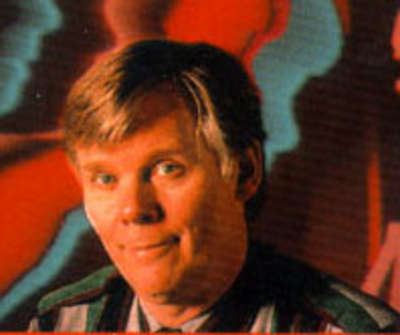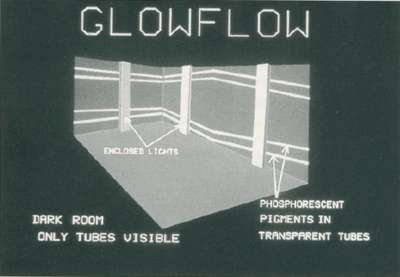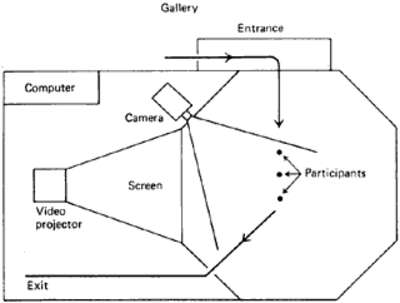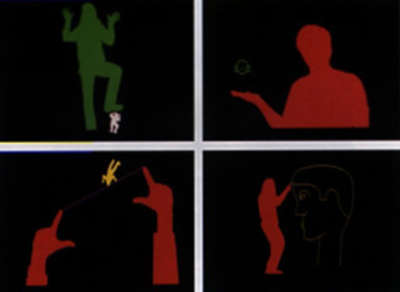Myron W. Krueger is a pioneer of interactive computer art and virtual reality. He received a B.A. in Mathematics from Dartmouth College, and a M.S. and a Ph.D. in Computer Science from the University of Wisconsin. He became involved in computer art by assisting a group of artists and technologists in the development of the interactive environment GLOWFLOW, a computer-controlled light sound environment that responded to the people within it.
After the experience with GLOWFLOW, he realized that he had his own personal vision of what computer art “should be like”. Krueger decided to become an artist guided by the principle that “interaction was the sine qua non of computer art.” [Krueger 1985]. Krueger envisioned a universal medium with wide application and culture-defining significance, which he called artificial reality. “In this medium, the computer perceives a participant’s actions and responds in real-time with visual and auditory displays” [Krueger 1985].
Since the 1970s, Krueger produced responsive environments which offered unencumbered, full-body participation in computer-created telecommunication experiences. In 1970 he presented METAPLAY, which combined live video and computer graphic images and projected them in front of the viewer. METAPLAY served as the starting point for Krueger’s best known artificial reality: VIDEOPLACE.
Krueger described VIDEOPLACE as the marriage of two cultural forces, television and the computer, “to produce an expressive medium for communicating playfulness and inviting active participation.” [Krueger 1985]. VIDEOPLACE was an exceptional exploration of the interactive medium. It is considered to be the first human interface to perceive and incorporate the participant’s full body in a shared communication space, where real-time performance and interaction can be experienced.
Krueger’s 1974 dissertation Computer-Controlled Responsive Environments was published in 1983 with the title Artificial Reality. The book presented a novel aesthetic perspective on human-computer interaction. In addition to VIDEOPLACE, it described head-mounted displays, data gloves, embedded training, along with myriad practical applications. It was later updated as Artificial Reality II and republished in 1991.
Krueger’s work has been exhibited in North America, Europe, and Japan, and has had a great influence in interactive computer art. In 1990 Krueger became the first recipient of the Golden NICA from Prix Ars Electronica in the category of interactive art.
He was teacher and researcher at the University of Wisconsin, and on the faculty of computing science of the University of Connecticut from 1974 to 1985. From 1980 to 1984, he was the director of the software company First System Corporation in Los Angeles. Krueger lives in Vernon, Connecticut.
Sources: [Krueger 1985], medien kunst netz, Ars Electronica archive, [Krueger 1991]










